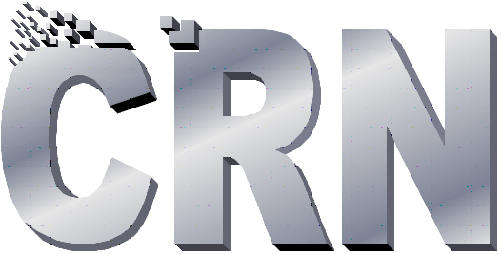 |
|
|
|
|
|
Join the conversation at CRNtalk!
|
Jeff Chinn CONDUCTED JANUARY 2006
Question 1: Tell us about Applied Microstructures. Applied MicroStructures is the leading provider of tools, technologies and expertise that enable the vapor deposition of nano-scale molecular films for a broad range of nanotechnology applications. Molecular organic coatings are widely used in micro-devices and have a tremendous impact in nano-technology research and in the emerging field of bio/nano health sciences. Vapor deposited nano-films are replacing wet-chemistry as the industry standard for surface coatings. Question 2: What is the technology behind molecular vapor deposition (MVD)? What are some potential applications?
Applied MicroStructures has developed the new vapor deposition process called
“MVD” (Molecular Vapor Deposition), which revolutionizes the engineering and
application of nano-films. The proprietary MVD technology offers an
unprecedented degree of nano-film growth control and chemistry flexibility while
our MVD-100 system enables manufacturers, developers and researchers to overcome
the nano-technology innovation and commercialization barriers. Question 3: Your company, Applied Microstructures, works with organic surface coatings. What is the advantage of organic coatings versus inorganic coatings? Organics films (carbon based) are very different than inorganics (metals, semiconductors, etc.) The application space and uses are completely different. Organics films are widely used in the life science areas. Recall that the first college course you take in Pre-MED is Organic chemistry. Organic films can be used in backend semiconductor processing. (I hope I answer the advantages in the next several questions.) Question 4: How long do organic nanocoatings last? Can they be applied to any shape? Organic coatings can be very stable and last forever. There are several categories of coatings that we work with. The first category I call “Protective Coatings”. These are films that are used a hydrophobic barriers and/or anti-stiction films. Just think of this as a layer of Teflon. For example, today there is an emerging application of nano-imprinting (stamping). In order to make a perfect waffle, you need a non-stick coating on the waffle iron. This is similar to what we do but on the atomic scale. The second category can be called “Reactive Coatings”. These films are coupling agents which things stick to or can be used to attach many other films to. These are the basic building blocks for many bio-films. The third category can be called “Bio-compatible Coatings.” These films are use in the life sciences for various applications. The fourth category can be called “Industrial coatings”. These are general coatings for various applications not exclusive to the three categories above. Yes, we can apply these films to virtually any shape or material. However, please note that our films are only angstroms thick in thickness. Films used in semiconductor IC are 1,000 times to 10,000 times thicker than ours. Question 5: Has applied Microstructures done any research on depositing layers of diamond on substrates? Applied MicroStructures does apply coatings to Diamond Like Carbon (DLC) or SP3 carbon. Question 6: How precisely can the coefficient of friction be controlled with nanolayers? Can organic coatings be used effectively to glue or cement two nanocomponents together? A better way to measure of films is “Work of Adhesion”. Our
anti-stiction films produce surfaces of about 5 microjoules/cm2. An untreated
silicon wafer has about 20,000 microjoules/cm2. Again, I like the analogy of
Teflon. We can apply a perfluoronate (Teflon) like film to virtually any
material. Question 7: Can MVD be scaled up to be used on macroscale objects?
The size of the object is typically not a problem in theory. I do want to remind
you that our films are extremely thin. Our process runs in small vacuum chamber
today. But then again, vacuum processing is used in many large scale industrial
applications today. Question 8: Has Applied Microstructures had any difficulty obtaining financing? Do you anticipate your company requiring more outside funding in the next several years? So far, we have not had any issues in obtaining financing. Our Series-B round was actually over subscribed and we had to turn some investors away. As for additional funding, that depends on which markets take off and which one we pursue. Question 9: To what extent can MVD technology be improved? Do you consider MVD technology to be in its infancy?
Today, MVD is the first building block for many nano-applications. There is a
lot buzz about nano-technology but few commercial products. I envision that the
true value of MVD will hit the market when commercialization occurs – just like
the semiconductor industry was 30 years ago. Question 10: Are there any technologies that can compete with MVD? We compete mostly with wet chemistry techniques which have been used for years to apply organic films. However, the wet techniques are environmentally unfriendly, (i.e., they use organic solvents by toluene, benzene, iso-octane, and other bad chemicals) which cause cancer and are flammable. I could go on and on as to the negatives of wet chemistry. Question 11: What plans do you have for Applied Microstructures during the next decade?
The hope is that nanotechnology will address many of the problems of the world.
Many governments (foreign as well as domestic) are trying to develop
nanotechnology applications. Applied MicroStructures' vision to help this
industry fulfill its charter. This interview was conducted by Sander Olson. The opinions expressed do not necessarily represent those of CRN. |
Copyright © 2002-2008 Center for Responsible Nanotechnology TM CRN was an affiliate of World Care®, an international, non-profit, 501(c)(3) organization.
|